![]()
[ashish] is still having fun with his lasers. His latest hack is a dual laser based tracking camera. He mounted his camera to a simple parallel port controlled stepper motor. Essentially, if the camera loses track of either laser, it tracks to locate the lost edge of the object. I’d probably go with IR to reduce the chance of retina damage…
digital cameras hacks981 Articles
Fiber Optic Flash Ring
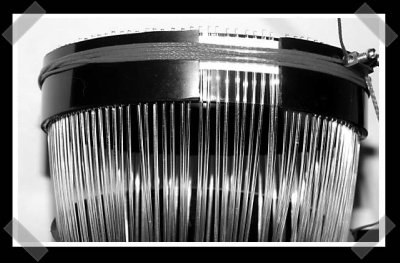
Ring lights that surround the lens are generally used for macro photography – they’re not cheap, but they’re one of the few ways to get shadowless photos. This fiber optic flash diffuser is based on the same ideas of this one. Rather than use a few large optic strands, [Joris] is using many, many more to decrease shadows as much as possible. His previous efforts are even more interesting. He built a LED version – with serial connected LEDs and a step up switching power supply to drive them. Then he moved on to cold cathode fluorescent before moving onto the fiber optics.
3D Video With Consumer Cameras
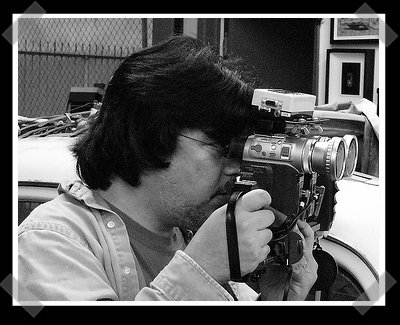
While perusing our photos from the Hooptyrides, Inc. tour you may have noticed [Eric Kurland]’s two handed stereoscopy rig. It’s constructed from two consumer grade Sony DV cameras. The problem with using two separate cameras to make stereo images or video is that a lack of clock sync will make objects appear out of their true position because of differences in framerate. To solve this problem Damir Vran?i? developed the 3D LANC Master. It reads the crystal frequency from one of the cameras and writes to the ram of the other camera using Sony’s LANC protocol. This constant monitoring keeps the clocks within +/- 3ms. The control box also has buttons to power on, zoom, and record in sync. The 3D LANC Master plans are completely open source and work with a large number of Sony cameras. We have more photos of Eric’s rig after the break.
Powershot Firmware Hacking

I was under the impression that canon firmware hacking had fallen by the wayside a bit. [random guy] pointed out that Canon firmware hacking is still alive and well, but it’s the smaller consumer models that are getting the attention. Several cameras, like the A610 happen to share the same digic II image processor as my Rebel XT. By uploaded some modified firmware, you can shoot RAW format pics, and get quite a few other features as well. There’s even a HDK (Hack Developer Kit) for rolling your own firmware. Most of the work appears to have been written up in Russian, but there’s an english wiki and guide page to get you going.
RC Digital Camera Interface
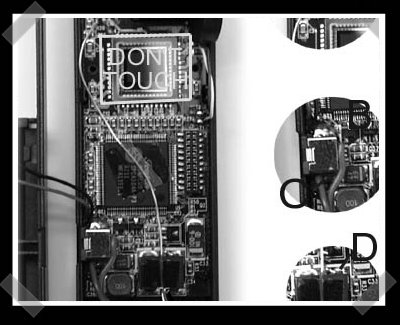
This isn’t a brand new hack, but it’s a great solution for most digital cameras that like to go to sleep on you.
[T. Black] put together a nice simple pic circuit to control a cheap aiptek digital camera. It uses a 12C508, a cap and a resistor. The PIC not only activates the shutter, but can wake up the camera from sleep mode. You don’t even have to provide a dedicated control channel – it can piggy-back on the throttle control signal. The hardest part of the project is tapping the signals on the SMD pc board inside the camera. There have been quite a few R/C camera controllers built, but this is certainly one of the most elegant. You can grab the code and schematic from the bottom of the project page.
Automated Slide Cleaning Digitizer
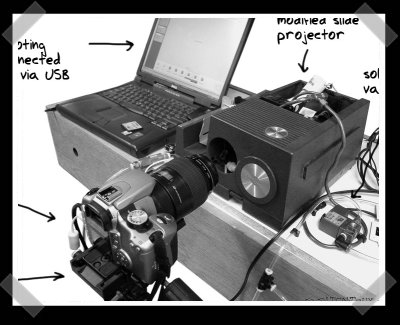
We’ve seen some work on diy digitizers before, but the one that [LP Rondeau] sent in is pretty sweet. It automates the process by advancing a slide projector carriage, blowing the slide clean with compressed air, and activating shutter release from a single controller. The images in this case have been shot in RAW (with a digital rebel ), and the setup allows immediate user review of the images – not to mention using the laptop for storage of all those huge images. The results of the shot and post processing are pretty good.
Digital Rebel XT(350D) IR Removal
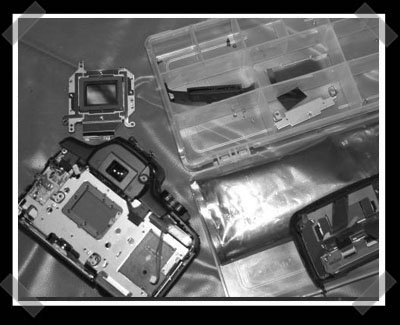
[ash] wasn’t satisfied with these instructions, so he provided a complete how-to on gutting a Rebel XT to remove the glass IR filter. This one involves pulling everything down to the CCD. Once the IR glass is removed, it’s replaced with some high grade glass from Edmund Optics. If you’re into camera modding at all, and own a Digital Rebel, the reference links at the end of the how-to are worth a read.










